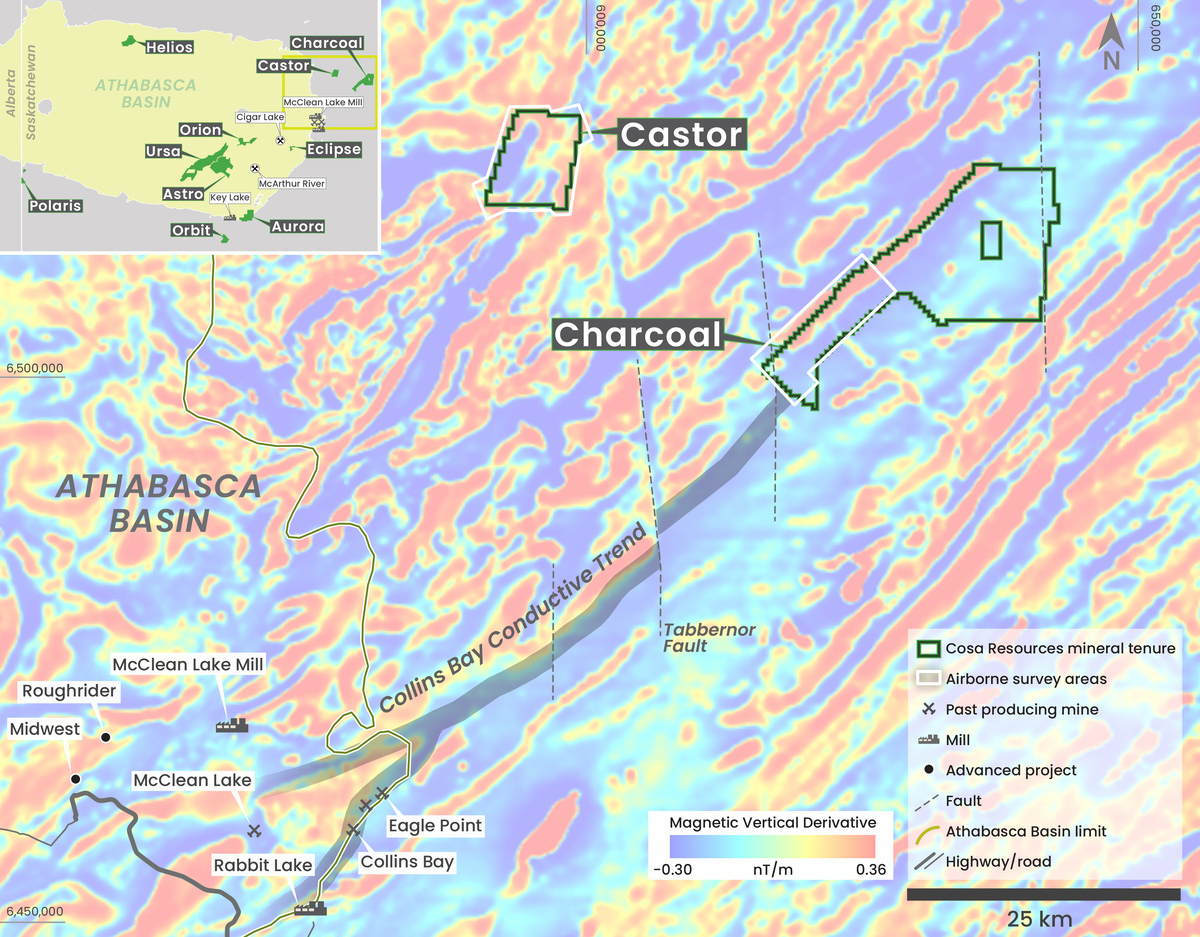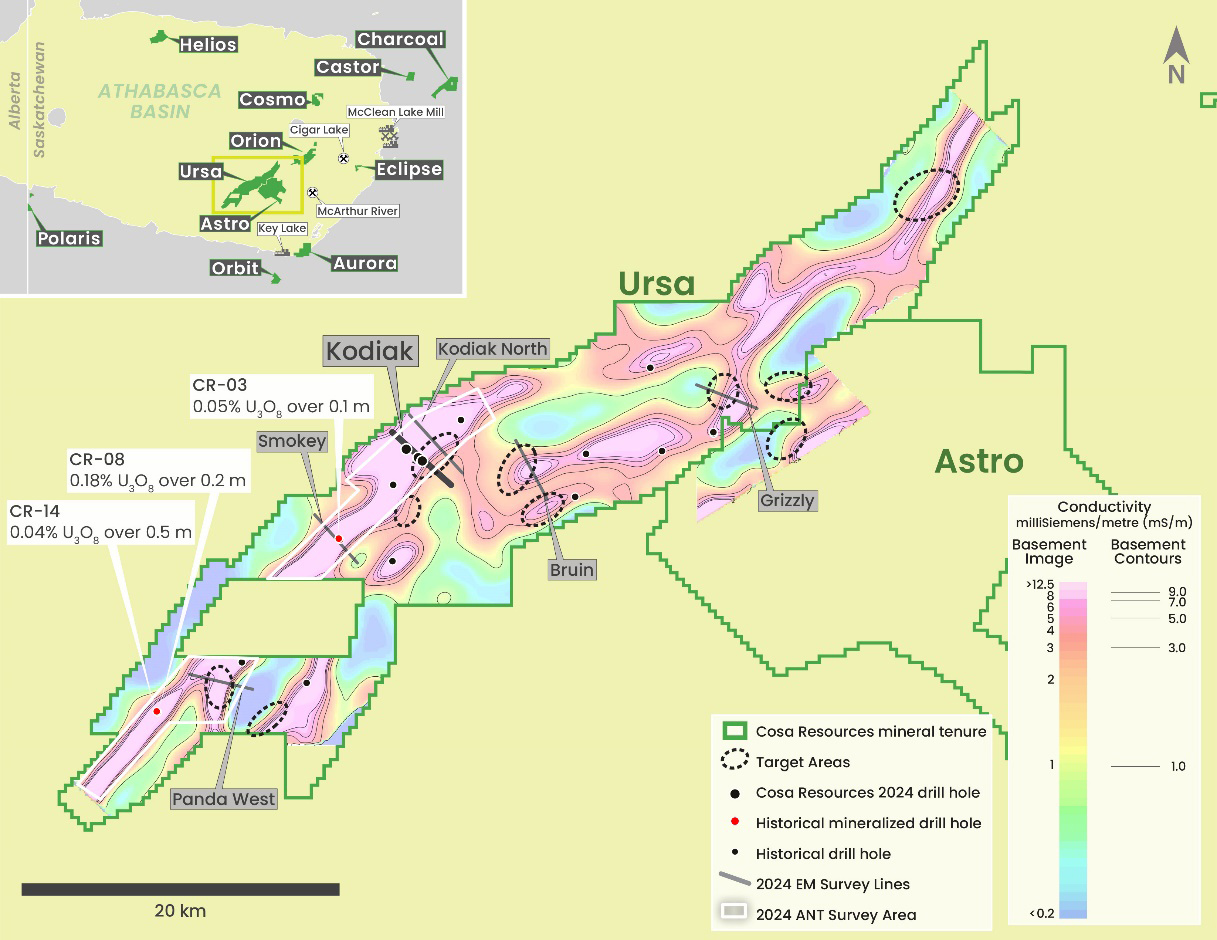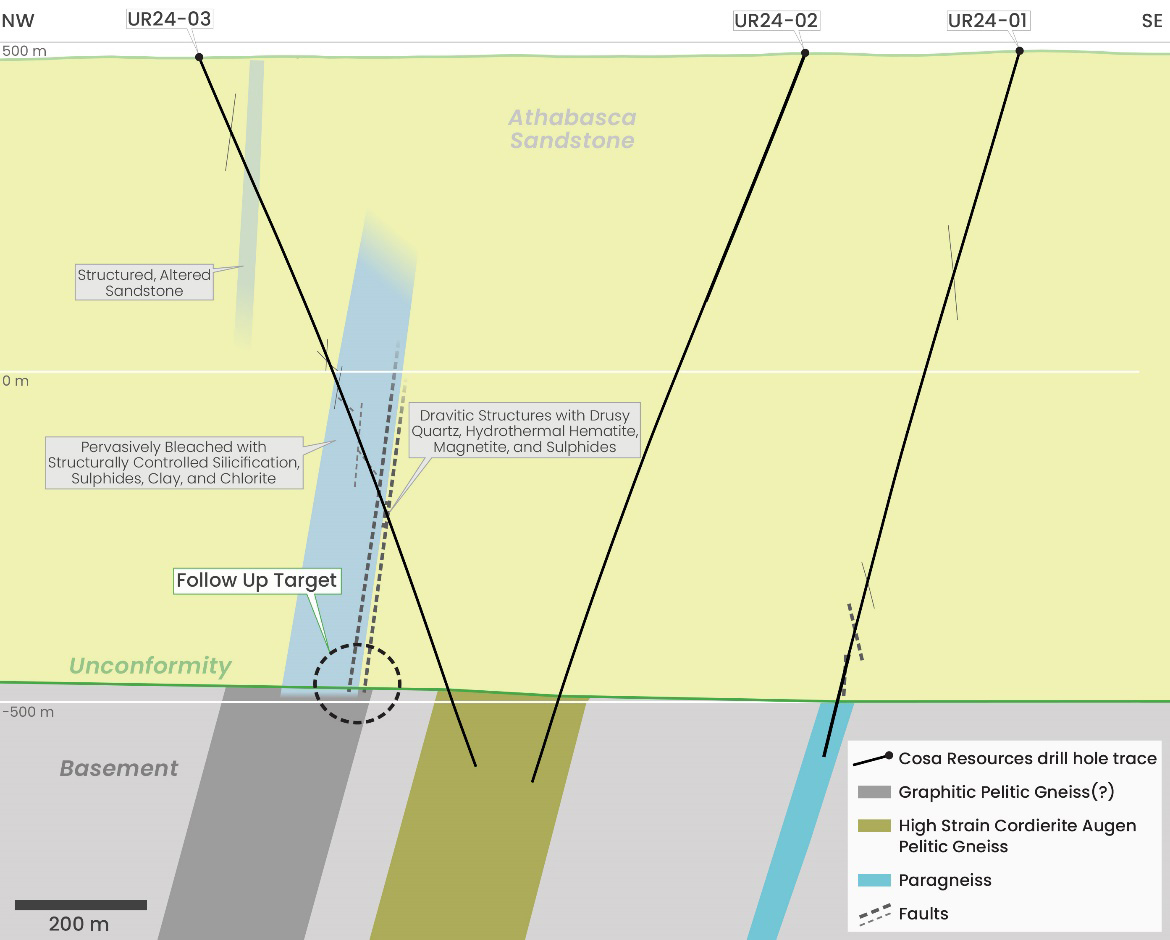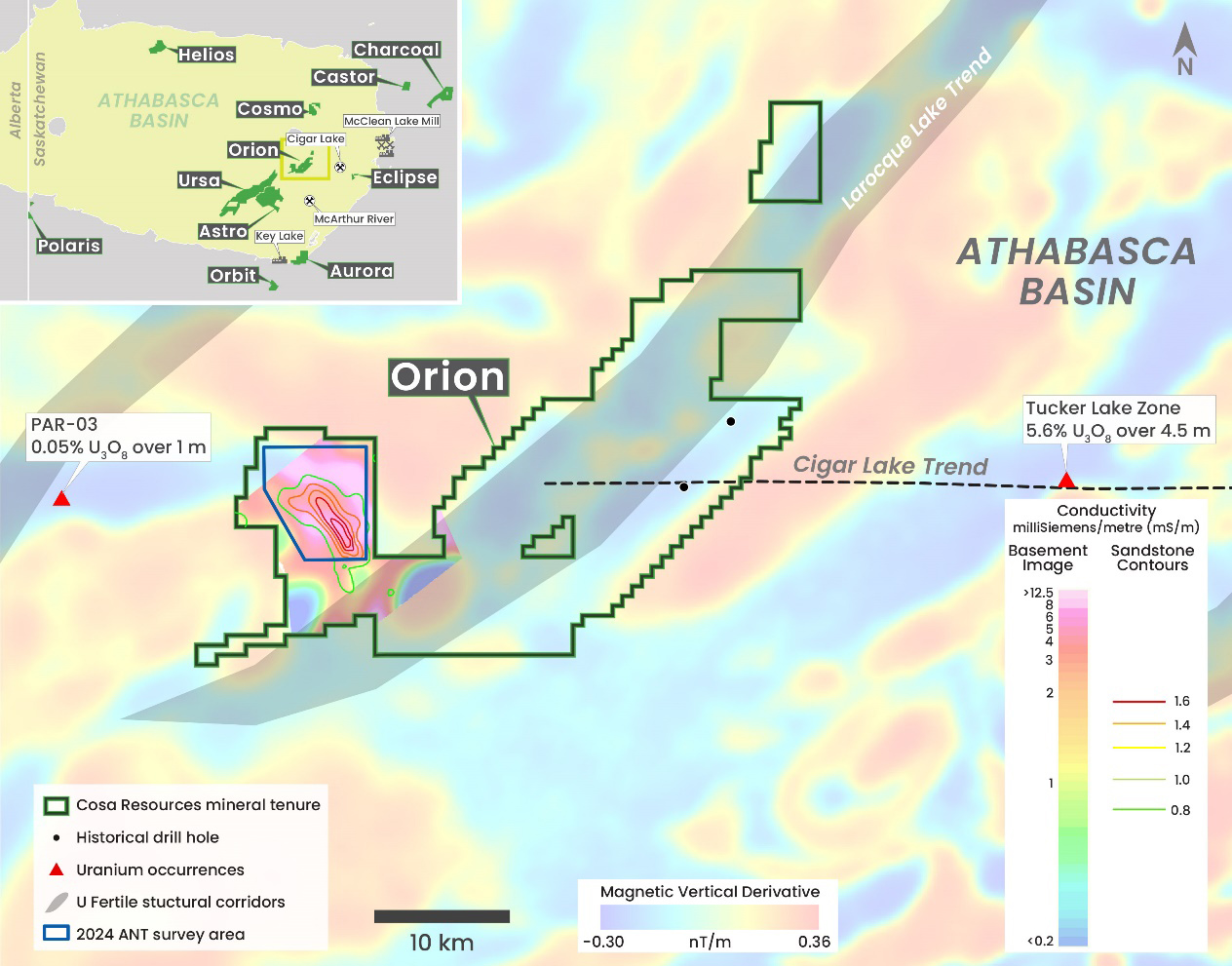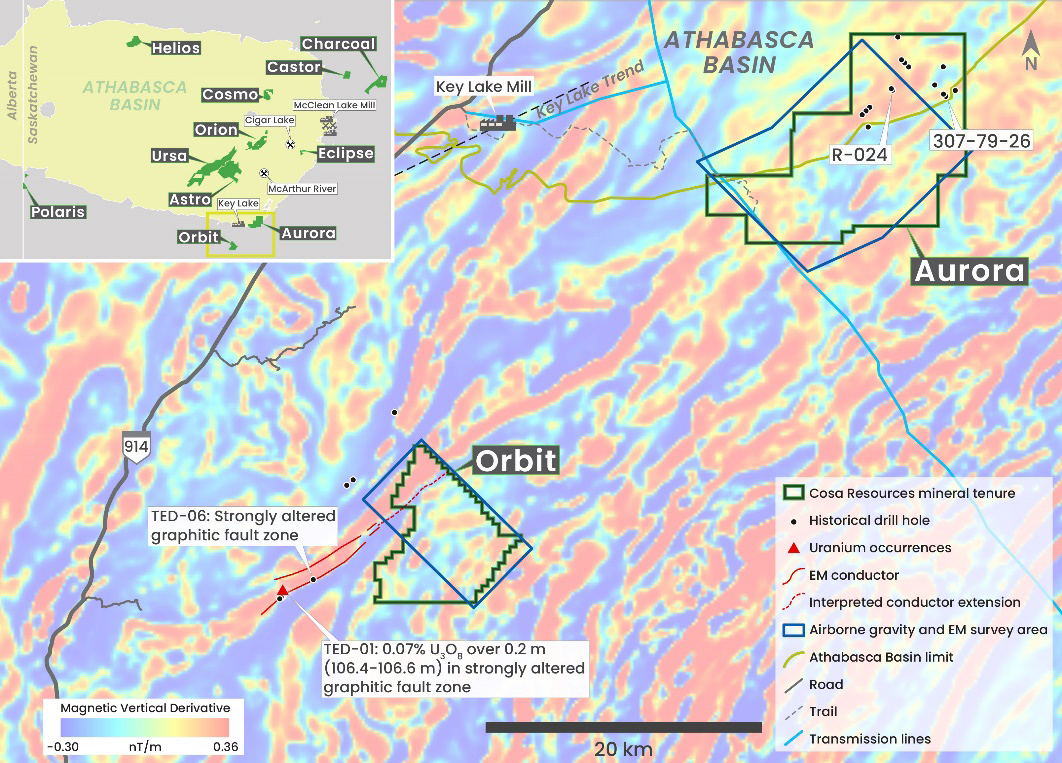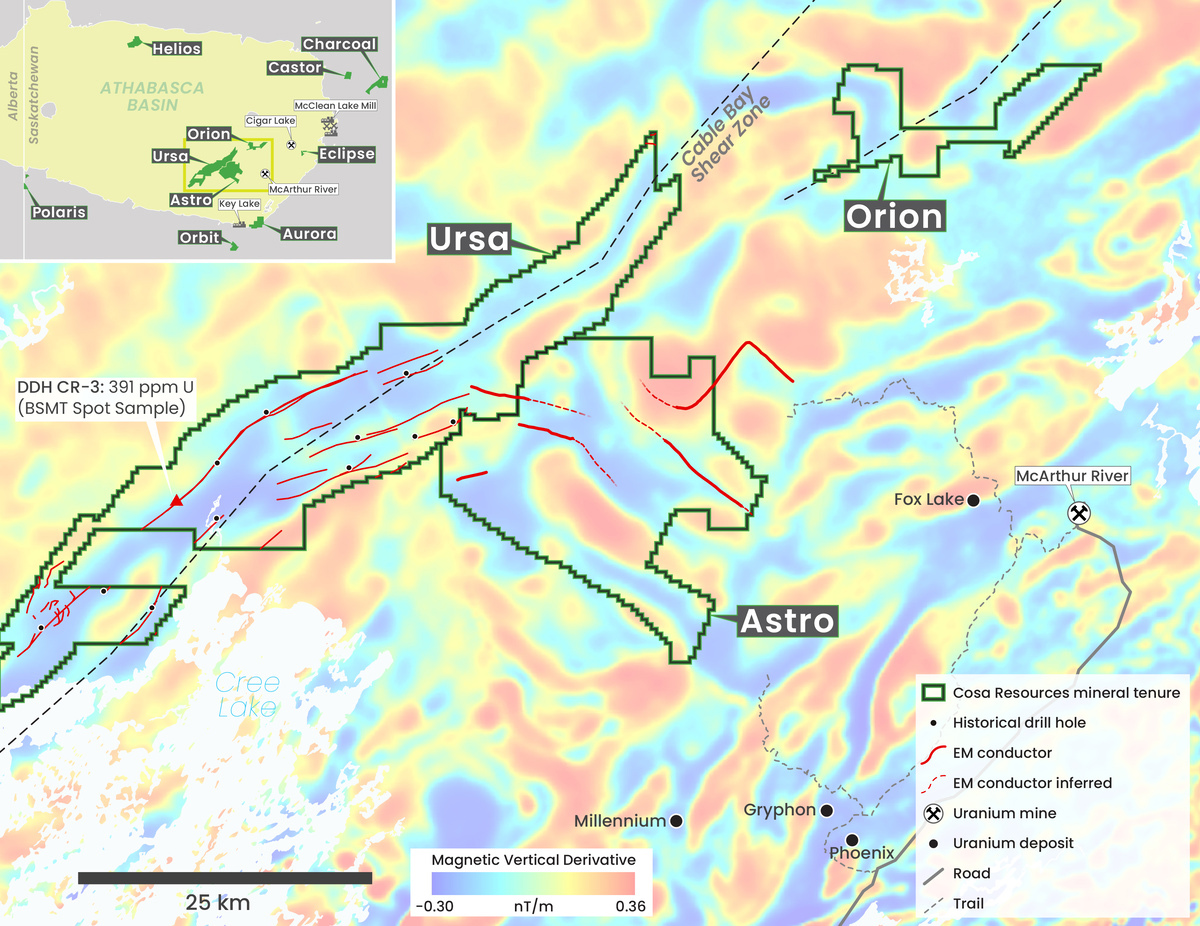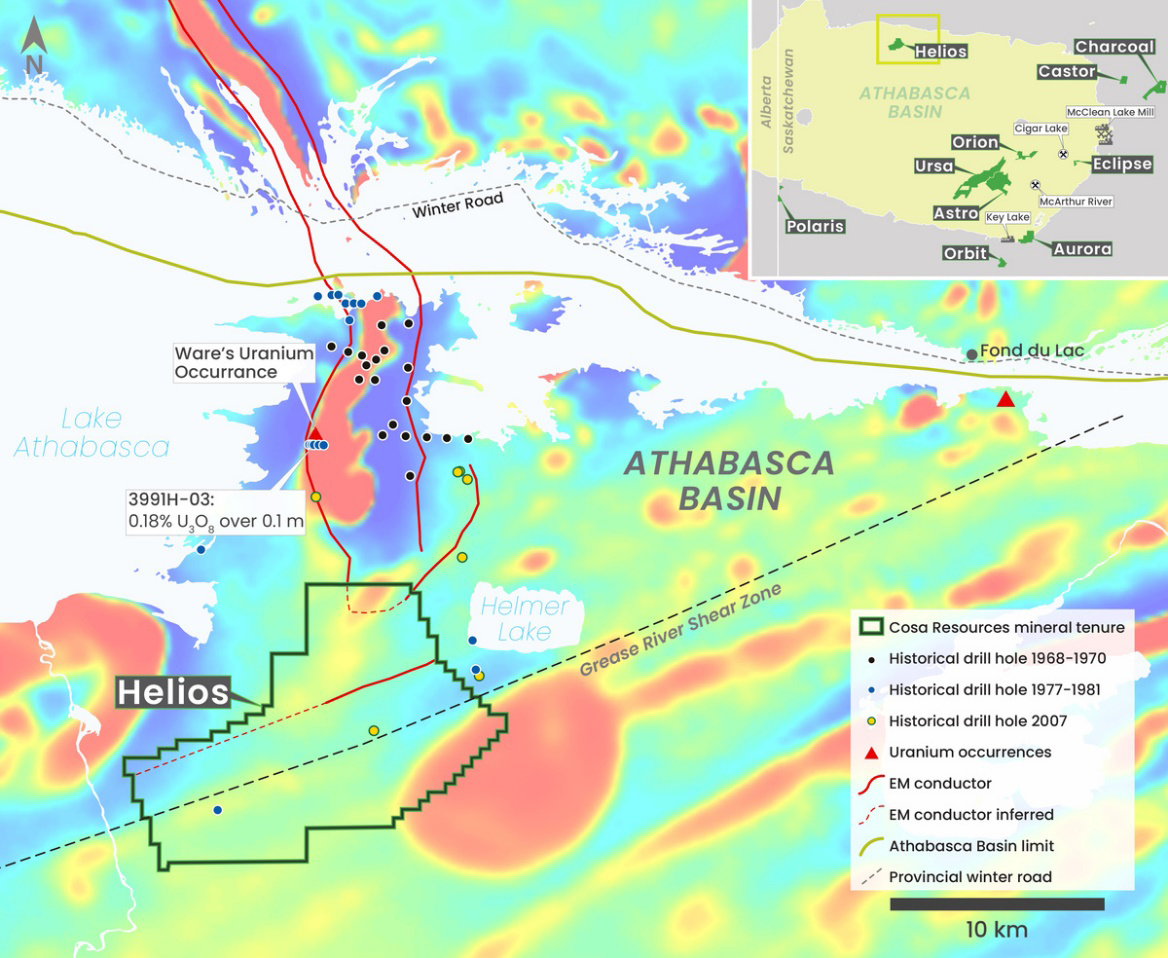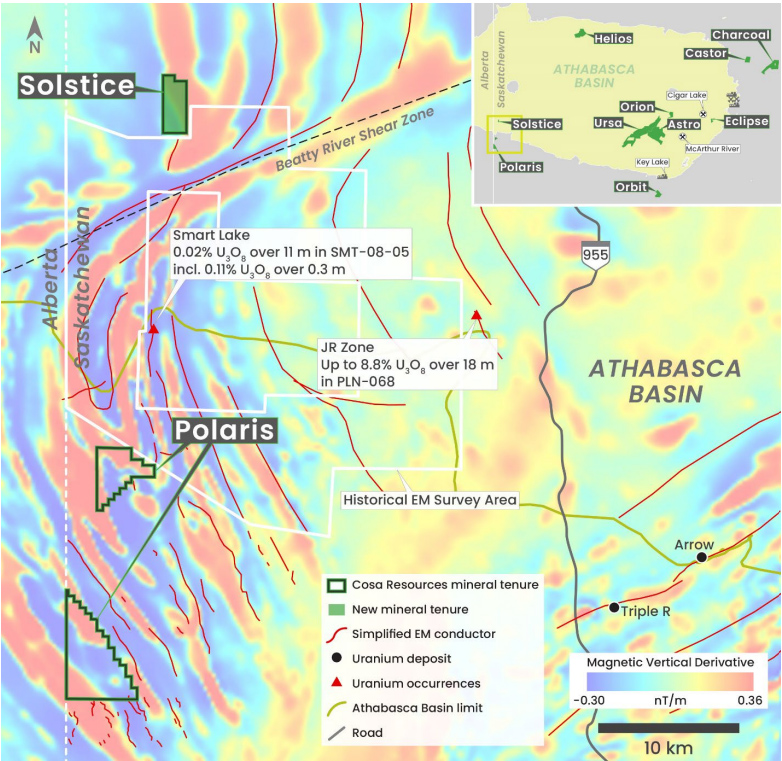The 21,080-hectare Charcoal property is located 52 kilometres northeast of Cameco’s Rabbit Lake – Eagle Point mine operation. The property sits within a prominent magnetic low zone extending northeast from the mine.
The magnetic low signature likely indicates the presence of prospective metasedimentary bedrock beneath the glacial till cover. Additionally, historical assessment records from the Government of Saskatchewan indicate the presence of numerous airborne electromagnetic conductors, possibly indicating the presence of graphitic metasediments and associated brittle faults, which are often associated with uranium mineralization in the Athabasca Basin. The property is 8 km up-ice from a historical radioactive boulder field.
As Charcoal is beyond the basin edge, basement rocks extend to the top of the bedrock and there is no overlying sandstone.
Castor, like Charcoal, lies beyond the present-day Athabasca Basin edge and therefore has no overlying sandstone cover. The property is located 55 kilometres north of Cameco’s Rabbit Lake – Eagle Point uranium mine operations (Figure A). Castor covers a flexure where a prominent northeast trending magnetic low anomaly oriented roughly parallel to the Eagle Point – Collins Bay trend bends to the west. This flexure may be an area of enhanced structural complexity that would be prospective for uranium mineralization.
Regional magnetic and historical EM results suggest the Charcoal property covers the northeast extension of conductive trends associated with the Collins Bay and Eagle Point deposits. The 459 line-kilometres of VTEM™ Plus surveying over the southwestern portion of Charcoal defined more than 27 kilometres of strike length of northeast-trending EM conductors located along the interpreted extension of the Collins Bay-Eagle Point trend, of which more than 20 kilometres are interpreted as moderately to strongly conductive. As the survey covered approximately 25%
of the Charcoal property, significant potential remains to define additional conductive strike to the northeast.
Castor
The Castor property covers a flexure where a prominent magnetic low zone changes orientation from northeast-trending to west-trending. The 473 line-kilometres of VTEM™ Plus surveying completed by Cosa defined more than 27 kilometres of strike length of northeast-trending EM conductors at Castor, over 16 kilometres of which are interpreted to be moderately to strongly conductive. The longest strongly conductive trend is located in the western portion of the project and crosscuts the axis of the magnetic low, suggesting complex folding of conductive basement rocks within the area. No EM conductors were previously known within the property as the most recently airborne EM survey of the area was completed in 1978.
Figure A – Charcoal and Castor Properties
